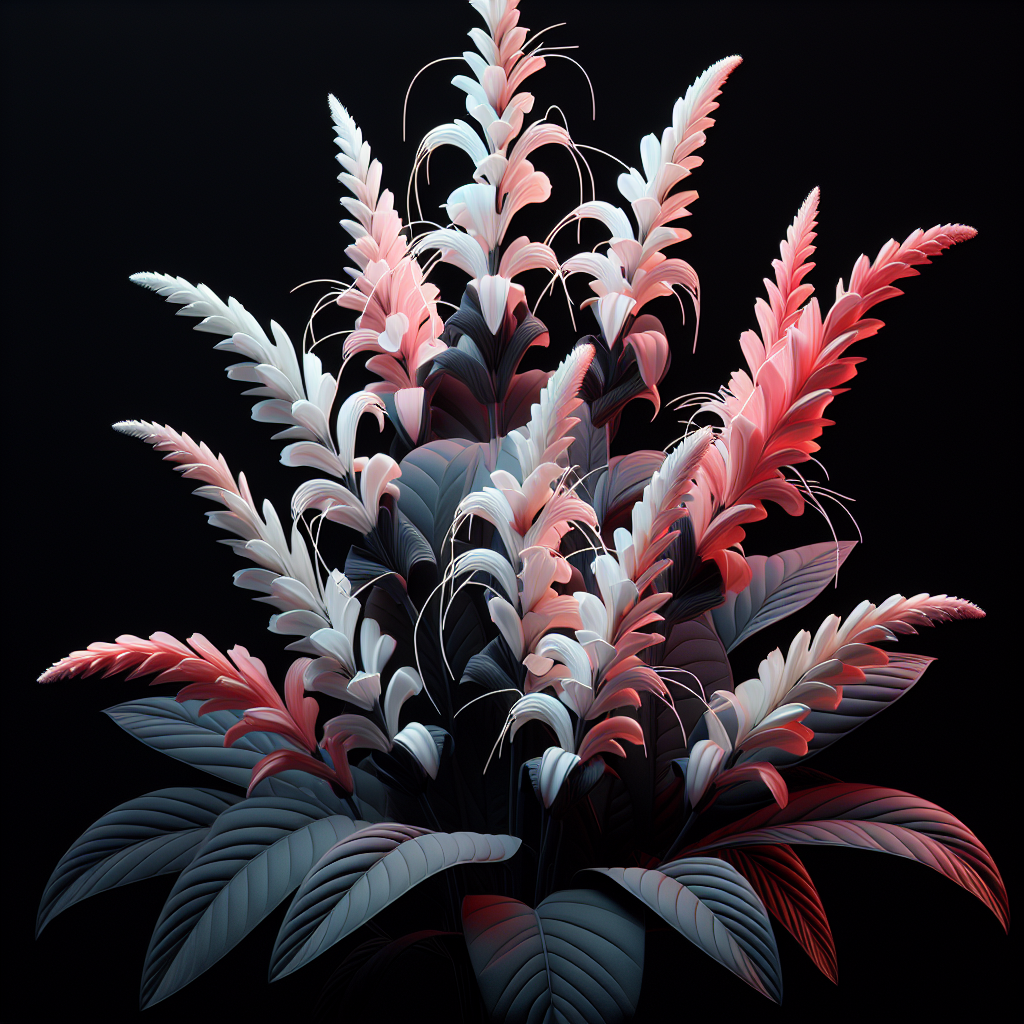Imagine a plant that doesn't just fit into your garden but struts in like it owns the place. That's Justicia brandegeeana for you—a plant that sounds like a secret code or a jazz musician from the sixties. Commonly known as the Mexican shrimp plant, this native of Mexico has thrilled gardeners and botanists alike with its remarkable appearance and resilience.
This plant was named after a botanist and explorer named Townshend Stith Brandegee. He was quite the character, dedicated to documenting plant species along the American continents during the late 1800s. You could say he was like a real-life Indiana Jones—minus the whip but with more leaves. Justicia brandegeeana, known also by its quirky look, appears as if nature, in a rare moment of play, decided to cover its stems with bright red, sometimes yellow, shrimp-like bracts.
Despite its playful appearance, the plant has some serious survival skills. Often found in the warm regions of Mexico, it can tolerate varying conditions, from shaded galleries to open gardens, making it a popular choice for gardeners who don't always have the greenest thumbs. This ability to adapt speaks volumes about its evolutionary prowess. To keep it thriving, you’ll need some basics: well-drained soil, a decent watering schedule, and a spot that isn’t too harsh under the sun.
So why do people love adding this to their collections? One reason is obvious—it's like having an exotic piece of flora that sparks conversation at any garden party. Its bracts are not actual flowers but modified leaves surrounding small, white, tubular flowers. This dual-layer interest captivates many, attracting not just human admirers but bees, butterflies, and hummingbirds. It’s like hosting a nature party, just outside your kitchen window.
Culturally, this plant holds its own significance, scattered throughout moist tropical regions of the Americas and even gaining popularity in places as far as Florida and California. Its charm doesn’t just end at beauty; its presence in gardens highlights biodiversity and a connection with nature. By nurturing such plants, as we share stories and oxygen, we’re part of a broader ecological framework.
Admittedly, not everyone shares a love for the shrimp plant’s flamboyance. Critics might find it a bit too unconventional or demanding in maintenance compared to classic garden staples. Some argue it should remain wild to preserve its natural habitat. Such viewpoints remind us of the broader conversation around plant conservation and selective gardening—creating a balance between human enjoyment and ecological responsibility.
Yet, advocating for this vivacious plant could also be seen as a metaphor for embracing diversity in all its forms. Imagine a world where every plant looked the same. That's about as exciting as a social media feed with no memes. In welcoming the unusual and vibrant, we enrich our environments just as diverse cultures and lifestyles enhance our society.
Whether you're into the aesthetics of it, interested in attracting wildlife, or you just want to own something with a cool, tongue-twister of a name, Justicia brandegeeana captures the essence of plant-based diversity. It’s a nod to those of us who dare to step out beyond the mundane, offering a small yet bold reminder that extraordinary beauty often lies in unexpected places.
For Gen Z, where identity and individuality are keystones, this plant echoes a relatable sentiment—unique, captivating, perhaps misunderstood. Owning a shrimp plant can be emblematic of personal expression, a small rebellion against uniformity, standing as a vibrant emblem of eclectic beauty in one's corner.
Thankfully, growing one isn’t too big a challenge, even if you're new to plant care. It’s the kind of plant that doesn’t hold grudges if you forget to water it every now and then, a low-maintenance yet high-impact addition to your living space.
The shrimp plant may not solve world peace or climate change, yet its presence in our lives brings nature into our homes, a reminder that sometimes, in between all the chaos and serious business, there’s beauty and whimsy waiting to be explored. It’s a shout-out to those of us who prize individuality, extend a welcome to the unfamiliar, and appreciate a bit of color in a sometimes monochrome life.

